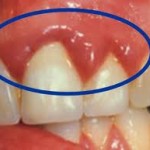Don’t let the thought of dental pain keep you from visiting Jon Frankel Dentistry. The skilled staff at this Ohio Dental Office will make sure you are pain free before they proceed with treatment. Serious infection can challenge local anesthesia but Dr. Frankel is skilled at keeping you comfortable.
Dental nerves have some nerve! They are certainly not terribly discriminating. Hot, cold, touch or sweet elicit the same response – pain. Dental pain can be excruciating and remain difficult to pinpoint.
There are several key causes of dental pain.
Decay
One of the best known causes of dental discomfort is decay also referred to as cavities. Acids produced by bacteria that grow in colonies on teeth and under gums literally eat away at the hard tooth surface. Sugar in food is metabolized by the bacteria, bathing the teeth in acidic waste. Soft drinks are often acidic in nature and erode the hard tooth surface increasing the vulnerability to decay. Acid reflux or GERD also compromise the tooth from protection in the presence of the bacterial colony or plaque.
Decay can range in appearance from white blotches of decalcification to actual holes in the teeth. The decalcified area may become stained changing the color from patches of chalky white to brown, yellow or orange.
Untreated, the decay reaches the inside of the tooth housing the blood enriched pulp and dental nerves. The once hard tooth surface literally crumbles.

Gum Disease
The gum tissue is soft and supports the teeth. It includes a ligament that acts as a barrier between the roots of the teeth and the bone in the jaw. Gum or periodontal (around the teeth) disease may begin with bleeding. Healthy gums do not bleed.
If left untreated bleeding may or may not discontinue as the bone supporting the teeth melts away. This often silent infection compromises the entire immune system.
Occlusion
The way teeth touch together or occlude is associated with clenching, grinding, migraine headaches, and sinus infections, ringing in the ears, recession of the gums, erosion or chipping out of the hard tooth structure at the gum line and can even result in an abscess or infection in the bone at the tip of the tooth root. It brings new meaning to the refrain, “That bites!”
Sinus infection
The floor of the sinus may touch the roots of the top teeth. A sinus infection often expresses itself as dental discomfort, tenderness in the face in the area of the cheek bones, under and behind the eyes and in the area of the forehead or in-between the eye brows. Aching teeth may be caused by a sinus infection.
Abscess
A dental abscess is an infection generally at the tip of the tooth root. The infection may begin inside tooth. It can be caused by decay, gum disease, trauma to the tooth or occur spontaneously from an unknown cause. The confines of the tooth anatomy cause the infection to expand down the tooth to the root tip and into the supporting bone. It can appear as a dark circle in the bone around the tooth in an x-ray. The area is dark as the bone has been displaced with the fluids of infection. The yellowish-white fluids may actually break through the gum tissue.
TMJ or TMD
Popping and locking, TMJ is inflammation and irritation where the ends of the bottom jaw bone meet the skull and the surrounding area. Muscles, nerves and bone may be involved. Skeletal discrepancy when the size and shape of the jaw and the skull don’t match up can be a contributing factor. Complications such as trauma or injury, tooth location, tooth loss, and clenching and grinding are further indications found in Temporomandibular Joint Disorder.
Fractured, cracked tooth
Ranging from thin and almost indistinct to quite obvious fractures can be terribly painful. Unlike a broken bone that can regenerate broken teeth can be difficult to detect and offer a challenge to patients and doctors alike.
Wisdom Teeth
Third molars or wisdom teeth generally make themselves known when one is 17 to 21 years old. Wisdom teeth may be fully erupted, partially erupted or impacted. Often difficult to impossible to care for due to lack of space, early extraction generally takes care of a small issue before developing into a large problem. Discomfort may be from teeth erupting, decay or impaction. Partially erupted teeth often make home care impossible and initiate decay in adjacent teeth.
Erupting Teeth
Teeth can cause growing pains. The developing permanent teeth press up against the roots of the primary or baby teeth. This pressure causes the roots of the baby teeth to disappear as the adult dentition erupts.
Referred pain
Strange as it might seem pain in one area might be felt in another. The tooth that hurts may not be the one that is diseased.
Heart Attack
Women more often than men may be warned of the onset of a heart attack by discomfort in the lower jaw.
To make it more confusing often even advanced dental disease including severely decayed teeth and infected gums offer no pain.



